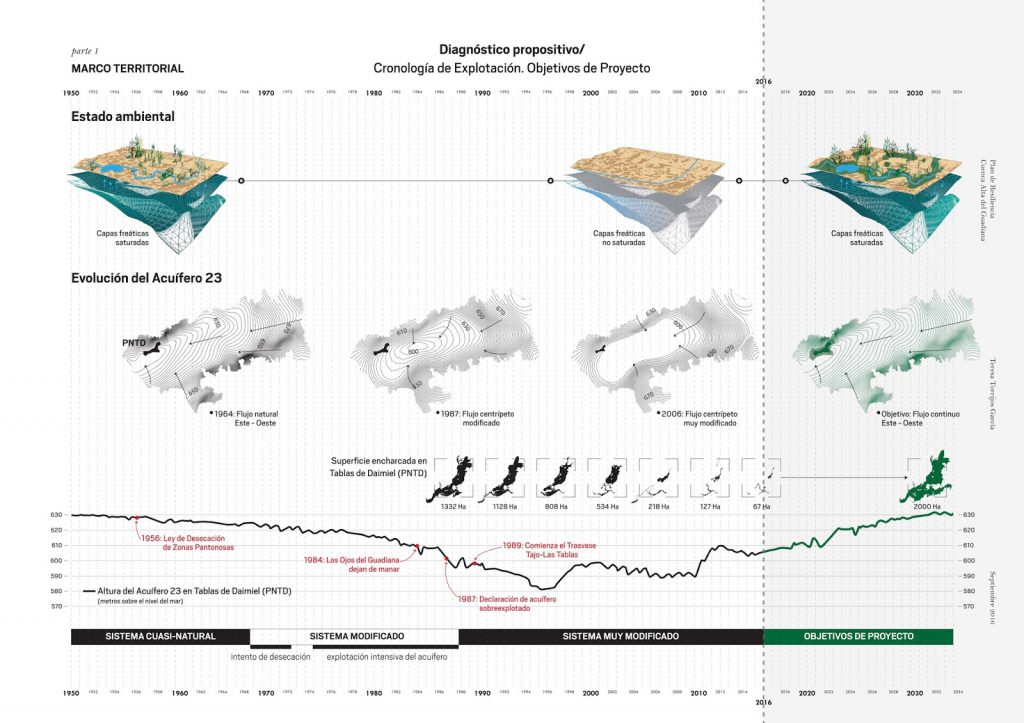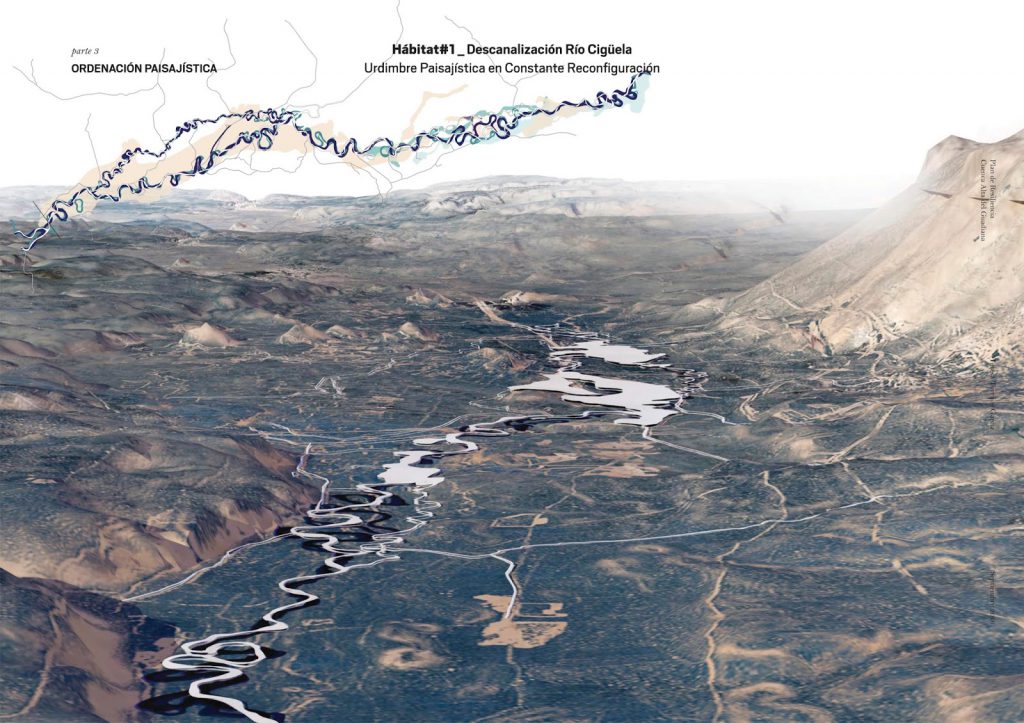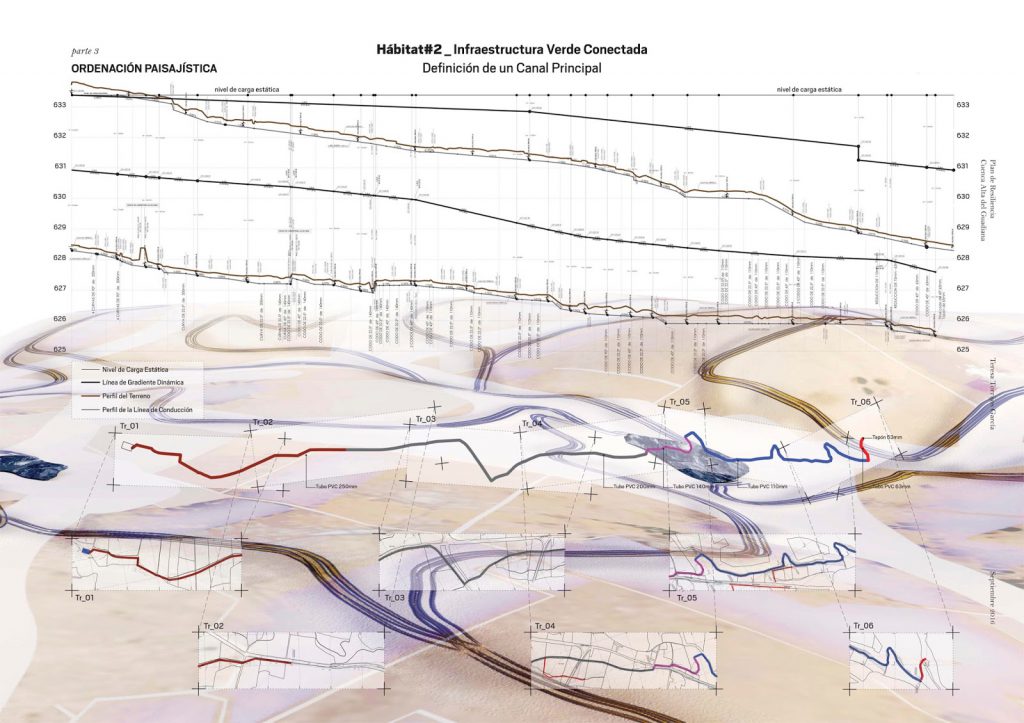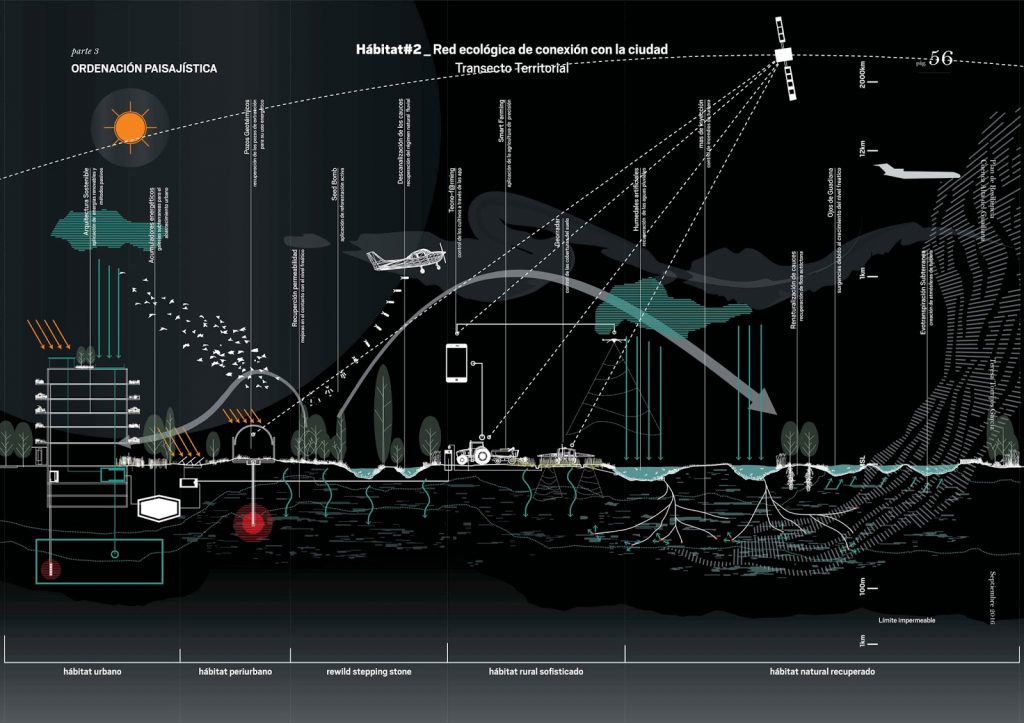This article is part of the Hidden Architecture Series “Attitude”, where we explore current works by contemporain architectes which, despite its differences regarding cultural or phisychal contexts, share a practical attention towards the social value of Architecture as a public structure.
Este artículo forma parte de la serie “Attitude”, comisariada por Hidden Architecture, donde exploramos la producción actual de arquitectos contemporáneos que, a pesar de las diferencias manifiestas de contexto físico o cultural, comparten una atención práctica hacia el valor social de la arquitectura como estructura pública.
“En cuestiones de gobierno territorial, las dinámicas de intercambio prevalecen sobre la propia singularidad de los lugares. Así, el desarrollo de distintas infraestructuras, en lugar de ser concebido desde una forma abierta y libre del progreso, está estrechamente vinculado a la necesidad de optimizar la productividad de la tierra. La presión económica para controlar la región condujo a una obsesión por cartografiar desde unos criterios científicos cada uno de los distintos elementos que conforman un territorio. Este mapeado se tradujo en la producción de una nueva definición del espacio como un complejo de flujos, movimientos y servicios que se extendían más allá de los límites administrativos.”
Michel Foucault, Nacimiento de la Biopolítica
Ya desde el siglo 18, época en que se comienzan a reglar las disciplinas técnicas tal y como ahora las conocemos, arquitectura e ingenierías mostraban aproximaciones operativas a la realidad bien diferentes. Mientras que los arquitectos se remitían a cuestiones compositivas y objetuales en la concepción de edificios, o a aspectos vinculados a una nueva movilidad en la definición del paradigma de la ciudad como espacio de circulación, los ingenieros comenzaron diseñando planes y políticas de gestión de mayor alcance territorial con el objetivo de explotar la productividad de las regiones.
Could these strategies of territorial operability be understood beyond the idea of exploitation of resources, of economic benefit? Could a higher, more relevant, necessary benefit be conceived than human benefit itself?
El fin, un beneficio económico, una plusvalía, que produjese una acumulación de capital vinculando así definitivamente naturaleza y ciudad mediante la explotación del territorio y la fuerza de trabajo de la sociedad.
¿Pueden entenderse estas estrategias de operatividad territorial más allá de la idea de explotación de recursos, del beneficio económico? ¿Puede concebirse un beneficio superior, más relevante, necesario, que el propio beneficio humano?
“La Ciencia sólo puede sobrevivir si se distingue, no relativa, sino absolutamente, entre las cosas “tal como son” y la “representación que los humanos se hacen de ellas”. Sin esta división entre las cuestiones ontológicas y las cuestiones epistemológicas, el conjunto de la vida moral y la vida social se encuentra amenazado. ¿Por qué? Porque sin ella no habría ningún argumento indiscutible con el que poner fin a la incesante charlatanería del oscurantismo y la ignorancia. No habría ningún medio seguro para distinguir lo verdadero de lo falso. Ya no sería posible hacer uso de los determinantes sociales para comprender cómo son las cosas. Y, entonces, a falta de esta comprensión esencial, se desvanecería la esperanza de pacificar la vida pública, siempre amenazada por la guerra civil. La naturaleza y las creencias humanas sobre la naturaleza se confundirían en un espantoso caos. Y a la vida pública, hundida sobre sí misma, le faltaría esa trascendencia esencial para poner fin a eternas disputas”
Bruno Latour, “Politiques de la nature”
Concrete, structural plans, metal trusses or elevators. None of this is seen in “Resilencia”. On the contrary, all we can discern seems to belong to a rather strange, unfamiliar world.
Meanders, flood areas, groundwater or aquifer levels. Trophic chains. What is this? Can an architectural project be defined and developed without determining, or even mentioning, any of the components that conventionally structure the practice? We will see how it is possible.
Hormigón, planos de estructura, cerchas metálicas o ascensores. Nada de eso vemos en el proyecto “Resilencia”. Por el contrario, todo lo que podemos discernir nos parece pertenecer a un mundo más bien extraño, poco familiar. Meandros, áreas inundables, niveles freáticos o acuíferos. Cadenas tróficas. ¿Qué es esto? ¿Puede acaso un proyecto de arquitectura definirse y desarrollarse sin determinar, ni siquiera hacer mención, a ninguno de los componentes que de forma convencional estructuran la práctica.
Veremos cómo es posible.
Let no one be offended by this definition.
En primer lugar, y sirviéndonos de terminología definida por Bruno Latour, el proyecto “Resilencia” podría ser definido como un “pacto de aprendizaje”. En su obra “Politiques de la Nature”, Latour propone este término para substituir al ya muy manido “contrato social”. El “pacto de aprendizaje” pone énfasis en la ignorancia común de los gobernantes y gobernados en una situación de experimentación colectiva.
Que nadie se ofenda por esta definición.
Who, when said life, thought about the life of the human being, was completely wrong.
El proyecto de Teresa Torrijos y Alejandro Cantera, bien comprometido con la emergente corriente de la “Ecología Política”, entendida como la buena manera de construir un mundo común, tiene la principal virtud de señalarnos a todos, señalar nuestra ignorancia y falta de compromiso, señalar nuestro desdén. Los arquitectos, como colectivo, fracasamos nuevamente en nuestra tarea y deber de permitir un marco mejor para el desarrollo de la vida.
Quien cuando se dijo vida, pensó en la vida del ser humano, se equivocó plenamente.
The architectural project should never again refer exclusively to the human interest. It must transcend to respond to each of the needs and rights that all agents involved in our social construction may have. And it must guarantee that all of them have visibility, they have presence and, moreover, power.
Power of representation.
“Resilencia” hace hablar al mundo mudo. Otorga representación a aquéllas realidades físicas que, componiendo nuestro mundo desde mucho antes que nosotros, han visto negado su derecho de formar parte del debate político que los humanos hemos convertido en nuestro circo.
El proyecto de arquitectura nunca más debe hacer referencia, exclusivamente, al interés humano. Debe trascender para dar respuesta a cada una de las necesidades y derechos que todos los agentes que intervienen en nuestra construcción social pudieran tener. Y debe garantizar que todos ellos tengan visibilidad, que tengan presencia y, es más, poder.
Poder de representación.
architecture is prospective design. It represents the beginning of a long and
slow process. The eco-systems are potential places to bring out the urban life.
The future architecture “grows” protecting and enhancing the ecosystem.
Evolutinary Urbanism gives value to each one of the intermediate stages rather
than focus on a future default. The initial ecosystem can slowly be transformed
or remain indefinitely in its state.”
ABSTRACT OF THE PROJECT | MEMORIA DEL PROYECTO
Human behaviour on territory has had a great impact on the geophysical processes in last centuries, creating a new geological epoch: the Anthropocene. The environment exploitation in favour of productive sectors supposes an impoverishment of natural systems and debilitates biological relations. That generates a serious risk of desertification.
Therefore it becomes necessary to define a new paradigm which achieves a constructive engagement between technology and nature. A concept that reduces the pressure on the environment and increases our ability to anticipate.
El comportamiento humano sobre el territorio ha tenido un gran impacto sobre los procesos geofísicos en los últimos siglos, dando lugar a una nueva época geológica: el Antropoceno. La explotación del medio en favor de los sectores productivos supone un empobrecimiento de los sistemas naturales, debilitando las relaciones biológicas. Esto genera un serio riesgo de desertificación.
Parece necesario, por tanto, definir un nuevo paradigma que consiga construir un compromiso entre naturaleza y tecnología. Un concepto que reduzca la presión sobre el entorno incrementando nuestra capacidad de anticipación.
This territory presents the particularity of having strong ties between superficial and underground waters. These hydrological relationships are complex and fragile, and they depend on seasonal variations and on human resource exploitation.
La Agricultura es el principal causante del Antropoceno, en la actualidad, entre un 40 y un 50% de la superficie terrestre se considera cultivable. Este es el caso de la cuenca del río Guadiana, donde la explotación agraria se ha incrementado drásticamente en los últimos 40 años. La repercusión de esta explotación ha repercutido en la desaparición de numerosos humedales, con el efecto que sobre su biodiversidad puede tener. Es necesario llevar a cabo un plan para recuperar la identidad territorial.
Este territorio presenta la particularidad de tener fuertes vínculos entre su capa superficial y las aguas subterráneas. Esta relación hidrológica es compleja y frágil, siendo muy dependiente de las variaciones estacionales y de la explotación humana.
In the last decades, ground-water extraction has become widespread, and its use for irrigations has reduced deeply the Aquifer 23 reserves, and has modified its natural system.
La Cuenca Alta contiene docenas de humedales que aparecen y desaparecen en función de las crecidas y descensos del nivel del agua subterránea. Esto es debido a la alta permeabilidad del suelo, compuesto por sedimentos limosos, y a la ausencia de un relieve favorable.
En las últimas décadas, la extracción de agua subterránea se ha extendido enormemente, y su explotación para regadío ha perjudicado las 23 reservas del acuífero, modificando el ecosistema relacionado a él.









































